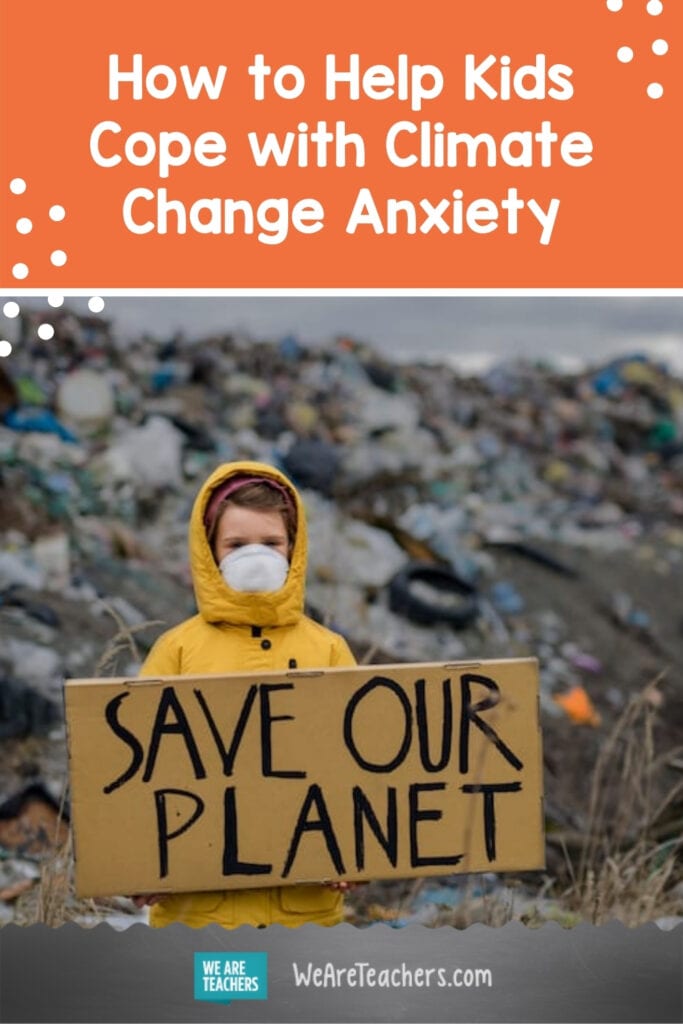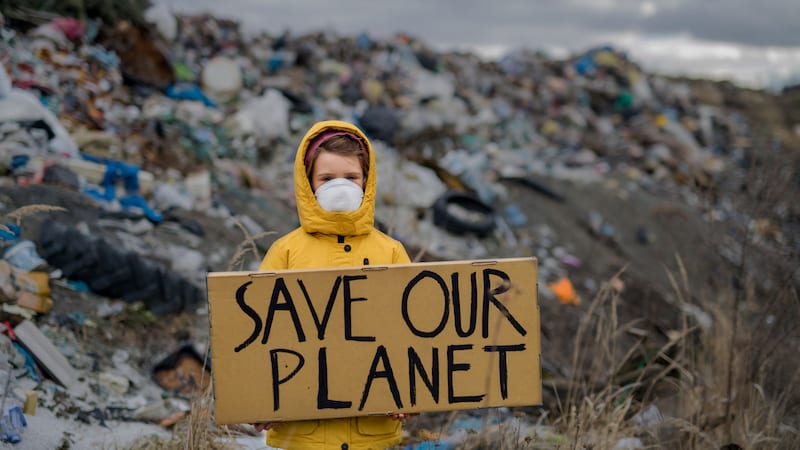“I thought the world was going to end,” Kureishi, a senior in high school, told me, recalling the wildfires that darkened the skies and poisoned the air across Oregon last fall. “I’m so scared it’s going to happen again. Do you think the fires will come back?”
Those wildfires were the most destructive in Oregon’s history. But they represent the new normal in the era of climate change.
The news is filled with stories of apocalyptic storms, floods, droughts, and wildfires. Reports come out at regular intervals offering little comfort. The world is still warming. Species are going extinct. And we aren’t acting fast enough or aggressively enough.
Aaaaand my anxiety just spiked.
Climate change anxiety, sometimes called eco-anxiety, describes the chronic fear and worry about climate change and the future of our planet. And children are more likely to experience it. After all, it’s their future that’s at stake. Indeed, the American Academy of Pediatrics warns that climate change poses real threats to children’s mental and physical health.
How can teachers help foster mental and emotional resilience in children in the age of climate change and turn anxiety into empowerment?
Listen with compassion and validate children’s feelings
It’s important to acknowledge and validate the feelings of young people experiencing anxiety about the state of the world. Create space for difficult emotions by encouraging open conversations and listening closely when children express their worries. You can reassure them that these feelings are normal and show how much they care about the planet. But be careful not to minimize or dismiss their concerns. If we fail to engage, change the subject, or give kids a flip answer that things will be fine (totally fine!), we risk making their anxiety worse.
Demonstrate that we’re in it together
Children may look at the decades of failures by adults to act and feel like climate change is their problem to solve. It isn’t. We must show children that we are in it together and that we have their backs. Share the ways you are stepping up to take action in your own life. Show your students that you are a trusted ally by working side-by-side with them to identify and organize classroom or community activities—like starting a petition, making a video or podcast, or planting a rain garden.
Be honest, but not alarmist
Children deserve honest and age-appropriate responses to their questions and concerns about climate change. But steer clear of the gloom and doom. A teacher once responded to my fear of nuclear war by telling me I was “lucky” because I lived near a high-priority bombing target and would likely be obliterated in the initial blast. This fueled my nightmares for years. We need to level with children about climate change, but ensure they feel motivated and empowered. That means providing accurate and responsive information and then pivoting to inspiring stories and opportunities for action.
Showcase positive stories and solutions
Climate change is scary. But millions of ordinary people around the world are working to solve it. Scientists, activists, and indigenous communities worked together to bring the California condor back from the edge of extinction. Engineers are finding ways to make cities safe as temperatures and sea levels rise. And young people across the world—like Greta Thunberg, Alexandria Villaseñor, Autumn Peltier, Xiye Bastida, and the 21 youth plaintiffs who filed a constitutional climate lawsuit against the federal government—are holding adults accountable and pushing for climate action. These stories can make children feel like they are part of a caring global community capable of making positive change.
Experience and celebrate nature
Nature is a wonderful antidote to anxiety for children (and adults) of all ages. Set up a scavenger hunt in a park, conduct a bird count, or start a nature journal. Get connected with a local community science project or have students share their observations from the field (even if the field is just their backyard) on iNaturalist. Research confirms that spending time in nature can reduce anxiety, stress, and depression. Plus, by playing, exploring, and observing our natural environment, children develop connections to the wild places and things that surround them. If kids learn to love the planet and all of its inhabitants, it will be easier for them to stay motivated and hopeful.
Offer age-appropriate ways to take action
We can help children identify actions to reduce their individual carbon footprint, like eating less meat, composting, reducing plastic waste, and conserving water and electricity. At the community level, we can help kids organize activities like picking up trash in local natural areas, creating a collective art project to raise awareness about climate change, or participating in marches or rallies. Students might also be interested in taking action to influence policy by calling or writing to elected officials, attending public meetings about climate change, or writing op-eds or letters to the editor of their local paper.
It’s not up to any one person to save the world from climate change. But taking action—no matter how big or small—can help children feel empowered and optimistic about the future.
For more content like this, be sure to subscribe to our newsletter!
Plus, 15 Meaningful and Hands-On Climate Change Activities for Kids.

